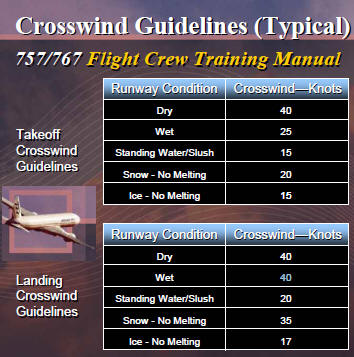 |
|
|
|
|
|
|||
|
By Jim Douglas |
||||
 |
May 7, 2010 - On
Thursday, an American Airlines Boeing 767-200, Flight 2 departed Los
Angeles, California at 9:10 AM. It arrived at New York’s JFK airport at
5:01 PM at which time the pilot was instructed to land on runway 22
Left. The pilot refused the landing instructions as the crosswinds were
at 35 MPH.
The American
Airlines pilot instructed the air traffic controller he was declaring an
emergency as he was unwilling to land on 22 left due to a reported 35
MPH crosswind which was dangerously close to the manufacturer's maximum
crosswind of 40 MPH.
When landing, the
more direct the headwind, the greater or increase in aircraft
performance in landing. In the case of American Airlines Flight 2, the
wind was not a headwind but rather the wind was blowing somewhere around
90 degrees off the nose of the aircraft , this decreased aircraft
performance.
The closer you get to the manufacturer's maximum crosswind speed the lower aircraft performance becomes. This is why airports have many runways at different angles, thus allowing pilots to fly their aircraft as close to a headwind as possible. |
|||
|
|
||||
|
ATC, “American 2
heavy 22 left cleared to land.”
Pilot, “Ah we
can’t land 22 ah we going to break out the approach and if you don’t
give us runway 31 left we are going to declare an emergency.”
ATC, “Are you
saying you’re going to declare an emergency at this time?
Pilot, “Three
times I’ve told you that, three times were declaring an emergency.”
Pilot, “American 2
heavy we are turning around to the left here and landing on 31 move
everyone somewhere away we have declared an emergency” |
||||

